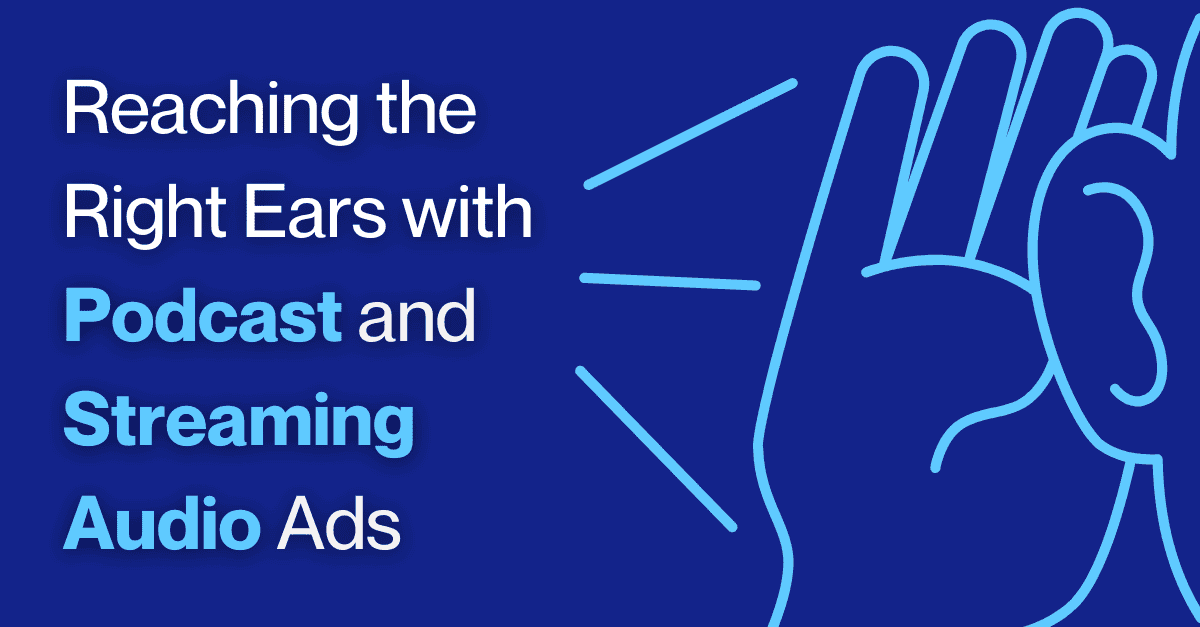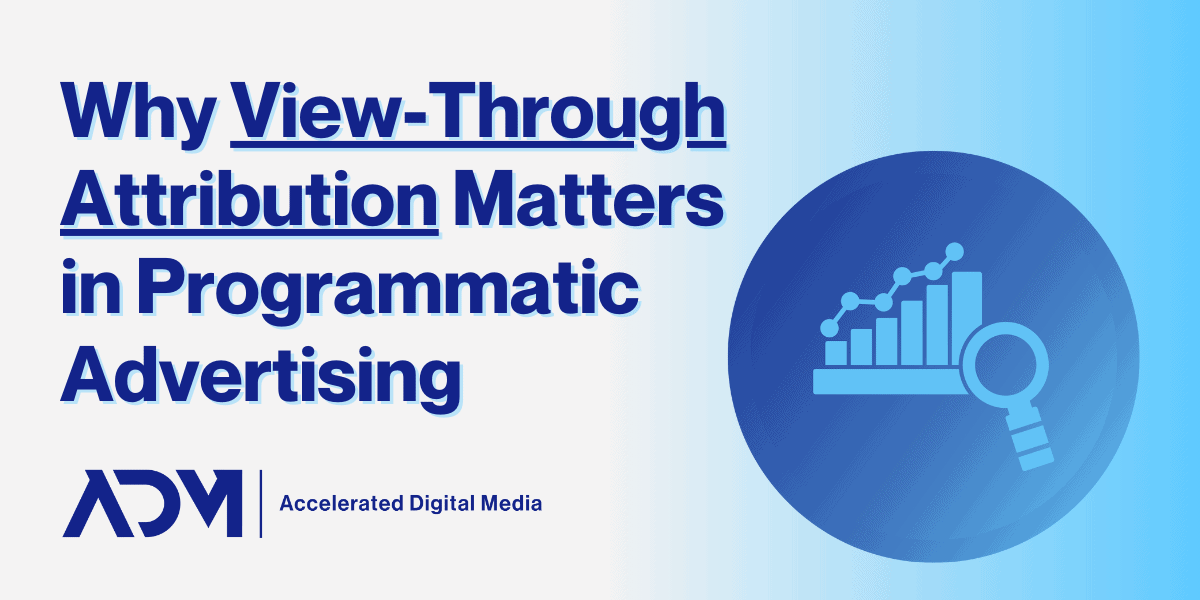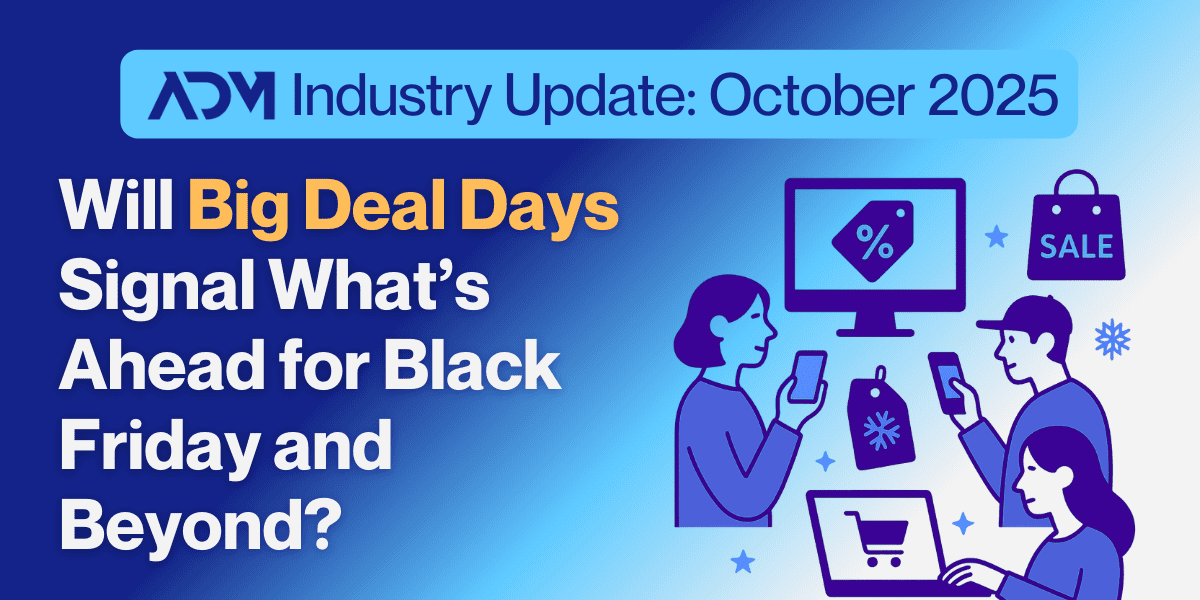Technology has changed dramatically since the radio was invented over 100 years ago—but even with the advent of TV, streaming video, the internet, and every other entertainment medium, people will always find time to listen to music or—other people talking. Hence the rise of streaming audio and podcasting.
The digital revolution hasn’t so much changed tastes as it has allowed people more choice, opening lanes for a variety of niche content creators to find their own unique audiences. And just as connected TV allows advertisers to combine the power of television advertising with the specificity of digital marketing, programmatic audio and podcast ads let you deliver a compelling audio message to distinct audiences that may be interested in what you’re offering.
In this blog, we’ll be discussing the advantages that podcasts and streaming audio present for advertisers and the basic building blocks you’ll need to create successful campaigns.
Programmatic Audio: More than Just Podcasts
Podcast ads, on networks like Spotify and Wondery, are certainly a major component of programmatic audio advertising—but they’re not the full picture. Ad placements can also appear during ad breaks in streaming music on platforms like Spotify, or purchased across a range of general radio networks such as NPR, iHeartRadio, and Pandora.
This means your ads can reach engaged listeners through a range of mediums and placements—whether that listener is catching up on the news in their car, listening to music on a walk, or streaming the latest episode of their favorite podcast.
Using Streaming Audio Ads Across the Sales Funnel
With its lower cost-per thousand impressions (CPM) rates and vast network reach, there is no doubt that programmatic audio can be a very useful top-of-funnel tool to generate awareness and build brand affinity.
But with strong audience targeting, there can also be some middle- and bottom-funnel benefits as well. Imagine a scenario where you are advertising a service with a longer sales cycle. Your current advertising efforts have done a nice job generating a lengthy list of leads and now you want to drive action. You can target audio ads to that list of non-converting leads and utilize creative that is designed to drive action, using limited-time offer language or creating FOMO (Fear of Missing Out) by highlighting that your service is being used by over 10,000 companies worldwide.
The Key Advantages of Podcast Ads and Streaming Audio
While connected TV certainly has similar top of funnel benefits, programmatic audio has several unique benefits.
Excellent efficiency: For starters, the CPM (Cost Per 1,000 Impressions) for a programmatic audio flight is significantly cheaper than other programmatic ad styles, usually ranging from $12-$15. That’s roughly three times lower than an equivalent number of Connected TV impressions. With better bang-for your buck, you can reach a larger audience while still maintaining focused audience targeting.
Non-skippable ads: The large majority of programmatic audio placements are non-skippable, meaning the completion rate for each listener is very high. Many of these placements can be supported with clickable actions, serving a display function and allowing a user to click directly to a desired landing page from the ad from within the app they are using to listen to music or podcasts.
Versatile reach: Lastly, and most importantly, audio placements can meet a listener almost anywhere. While formats like connected TV overwhelmingly reach users watching a program at home, programmatic audio can reach them while they are driving during their morning commute, working out at the gym, on a hike, or wherever else they need some audio accompaniment. That means programmatic audio placements can relay your message to potential customers in situations where other digital marketing channels cannot typically reach them.
Starting Off: Audiences and Placements
The first step is to define your audience. That will rely on your understanding of your market—age, gender, geography, etc.—and the purpose of the specific ad flight you’re looking to deploy. Are you advertising a new or updated version of an existing product? That might push you in the direction of a first-party audience of existing subscribers.
If you’re looking for new customers or branching out in new directions, you’ll need to build a profile of who those people are and potentially utilize a third-party audience featuring a highly relevant list, or custom-build a browsing audience of users who are actively searching the web for related content?
In addition to selecting the audiences that will hear your programmatic audio ads, you also have the power to dictate where they will hear them. There are a few ways to target audio placements.
If you’re unsure whether your audience is listening to a hip-hop playlist or the latest true crime podcast, ADM’s recommendation is typically to select a network (such as Spotify) and place the ads on Run-of-Network. This eliminates some of the guesswork and instead allows the ads to find your audience regardless of their tastes.
If your audience is broader or less-defined, there are also opportunities to target audio placements categorically. For example, if you believe your product or service is relevant to an audience that is listening to comedy or sports related podcasts, you have the option of selecting inventory packages by those genres. This will place the ads in front of anybody who is consuming content within that inventory package.
Defining Goals and Measuring Success
Next, you’ll need to define your goals and identify the metrics that will indicate success. These goals become crucial benchmarks in ongoing measurement, allowing your media buyer to build campaigns with intent and continually refine them to achieve exactly the performance you are looking for.
“Success” is likely defined differently based on the advertiser’s goals, but at ADM we generally look at the below metrics as a way of measuring top-of-funnel success:
- Impressions – How many listeners were exposed to your ad?
- CPM (Cost Per Thousand Impressions) – How cost-effective were the impressions?
- Audio Completion Rate – What percentage of listeners heard the entire spot (Note: for non-skippable formats, this number will be 100%).
- Cost/Completed Listen – How much did it cost per user that listened to the entire spot.?
And even if top-of-funnel is the core focus, we also maintain visibility to other down-funnel actions that stem from clickable ads:
- Site visitors
- Add to carts
- Purchases
- Form submits
Building Compelling Programmatic Audio Ads
Once you know who you are targeting and what your goals are, you’ll need to develop your creative. The most prevalent inventory comes from spots that are 15 or 30 seconds in length. Your creative should:
- Reflect your brand’s personality
- Clearly lay out the benefits of your product or service
- Relate to the users it is intended to reach, so they know right away that the advertisement is speaking to them
- Include a strong call to action at the end of the spot
That’s a lot to accomplish in a brief audio snippet, so you’ll need to make every word matter. Advertisers can use existing audio assets or work directly with their agency team in developing a script and executing production.
Once you have a well-defined audience strategy, attainable goals, and strong creative, you’re ready to launch your podcast ad campaign.
Using Audio Ads in Tandem With Other Channels
In digital marketing, no channel is a catch-all: Each needs to work in harmony with your other ad types for a complete approach. We’ve written in the past about how connected TV can work alongside other channels, and similar principles apply to programmatic audio.
Let’s consider a scenario where TOF awareness is important, but you also want to drive action.
To drive that top-of-funnel awareness and build up brand affinity and recall, you can utilize both connected TV and audio in tandem to reach listeners in different places and establish multiple touch points. By using the same taglines and “voice” between your TV and audio creative will help establish recall.
Taking that a step further, we know that we also ultimately want to drive action. Advertisers can pair both connected TV and audio placements with display retargeting. Essentially, what this means is that you’d be creating an audience of TV viewers and/or audio listeners who you know have consumed the full spot, and then double back to them with display ads across the web.
Perhaps somebody heard your ad and found it compelling—but they were listening to a podcast while driving to work. After a long day on the job, they may forget about that awesome ad they heard on Tuesday morning, but seeing a banner ad in the evening a few days later will jog recall while they’re in a better situation to take action, like visiting your site or, ideally, completing a purchase.
If you’re interested in launching programmatic audio ads for the first time, or you’re struggling to bring in revenue from your existing ones, don’t hesitate to reach out to the team at ADM. We specialize in building custom, growth-minded digital marketing strategies across the entire sales funnel, and our team would be happy to speak with yours about ways we could maximize your return on digital ad spend.




